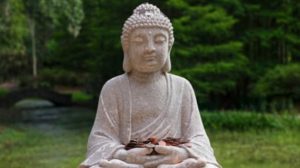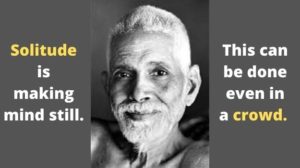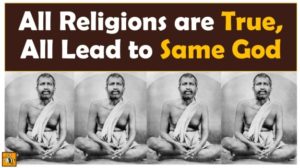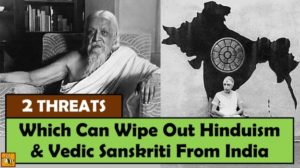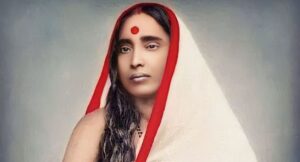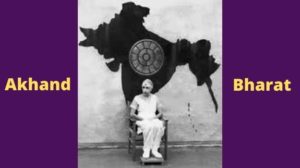What kind of yogic powers do God-realized sages possess? How are they able to help devotees even after giving up the body? Find out by subscribing to our Yogic Powers of Pandit Shriram Sharma Newsletter.

The enclosed story has been documented by V Ganesan in his book: The Human Gospel of Ramana Maharshi. V Ganesan was Maharshi’s grand nephew and he had the tremendous fortune to spend the first 14 years of his life in the Maharshi’s divine company.
Masthan Swami was a staunch Muslim. His parents observed all religious codes, rituals, and disciplines rigorously, and brought him up in the same manner.
Even as a child of eight years, he would enter into Samadhi without knowing what it was. He had the natural ability to be detached from people and things from childhood.
This remarkable devotee followed all the Islamic injunctions and was very much devoted to Allah and Prophet Mohammed. In 1914, Masthan Swami was living in Desur, a village forty miles away from Tiruvannamalai and from where Desurammal hailed.
Being two of the only people in that village who shared a similar spiritual “madness”, the two became friends. One day she told him, “Masthan Swami, you must meet my guru. She then brought him to Virupaksha cave to Ramana Maharshi.”
After this staunch and devoted follower of Islam came to see Bhagavan at Virupaksha cave, this is what he recounted:
“Ramana Maharshi was seated like a rock; his unswerving gaze was filled with grace, compassion, and steady wisdom.
I stood by his side. After giving me a look, the gate of my Heart opened, and I was also established in that state in the very first encounter. Just one look from Bhagavan and I stood like that for eight hours, absolutely without fatigue, and filled with total absorption and peace.
In those days at Virupaksha cave, Bhagavan would open our Hearts with a single gracious look, and we would be transformed. There was no need for any questions, since, by his look, he revealed inherent divine wisdom.”
What a wonderful man Masthan was! In the very first encounter he instantaneously, like all the others whom we have known about, took Bhagavan as his guru.
He had already read about the qualifications and marks of a guru. He could see that seated in front of him, in human form, was not only his guru, but God as well. When he was ready to go back to his village, Bhagavan gave him a very steady look.
Masthan Swami’s Conflict
When he returned to his village, Masthan Swami experienced some conflict within himself. Until then his Master had been Prophet Mohammed.
Though Allah was God, and Prophet Mohammed was his guru, here was a living guru, Ramana Maharshi. “Am I disloyal to my other guru, Mohammed, who is no more?” he wondered.
This was his conflict. He was filled with Bhagavan’s presence, but as he was brought up in the Islamic tradition he had this feeling, “Am I brushing aside my Master Mohammed because he is no more in the body?” Fortunately, he was bold enough to go to Ramana Maharshi and confess, “Bhagavan, this is my problem. Please help me.”
Ramana Maharshi looked at him for sometime because Bhagavan was never interested in the question. Bhagavan was always more interested in the questioner. He looked at Masthan Swami for a full fifteen minutes, showering all his grace and replied:
“Do you take this body to be Bhagavan? Do you think the Prophet is dead? Then is Buddha dead? Is Jesus Christ dead? Is Adi Shankara dead? Are they not guiding, hundreds of thousands of people even today? Are they not living in the Heart? A living guru means the one living in one’s Heart as a guru.
A living guru does not mean somebody living in a body at a given historical time, and at a given geographical space. The guru ever lives in your Heart. Heart is Allah, Heart is Mohammad, Heart is Jesus Christ, Heart is Buddha, and Heart is Bhagavan. Live in the Heart as the Heart by diving into the silent Heart.”
– Sri Ramana Maharshi
What Did Sri Ramana Mean?
V Ganesan: These words were recounted to me by Viswanatha Swami. I could not grasp their meaning immediately, so I requested Viswanatha Swami, “Please explain it so that I can understand.”
He said, “The guru is timeless. To talk of the guru in time, you bring in death, birth, living, all this. There is no outer guru and inner guru. There is the guru principle, which is the Heart of every one of us.”
I said, “Swami, how do you say this?” He replied, “A devotee once came from Lahore. Tiruvannamalai and Lahore are more than one thousand miles apart. In the 1920s and 1930s, travel was almost impossible in India.
He could stay for a month or so. But when he was to leave he wept before Bhagavan, ‘How can I leave you and go, Bhagavan?’ Bhagavan asked, ‘Where are you going? Can you go away from Bhagavan? Bhagavan is always with you. Bhagavan is in you. In fact you yourself are Bhagavan.’
It is the same state of “I am” in Viswanatha and Ganesan that is Bhagavan; the living Master is always in the Heart as still awareness. This awareness that is in you and you in it, in me and in every one of us, that is Arunachala Ramana, God, Self, Heart, Jesus, Buddha. We can give it any name or no name. Love makes no claim of its own.”
Credit: Instagram Page ramana.maharshi_self.enquiry
Uplift your consciousness! Receive daily spiritual quotes from great Rishis. Subscribe on WhatsApp.

